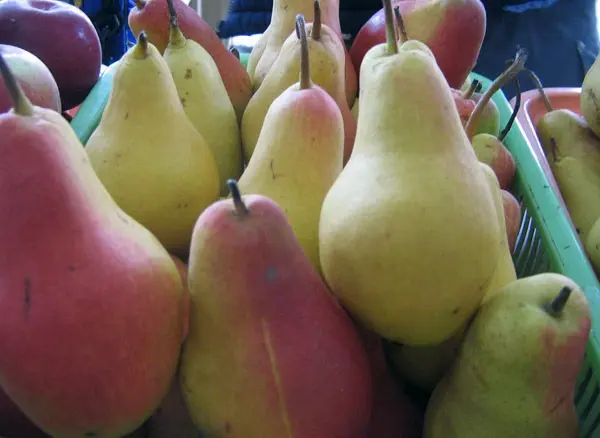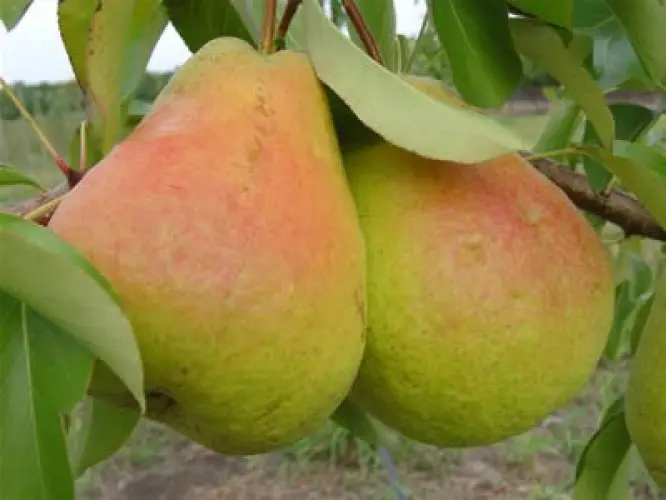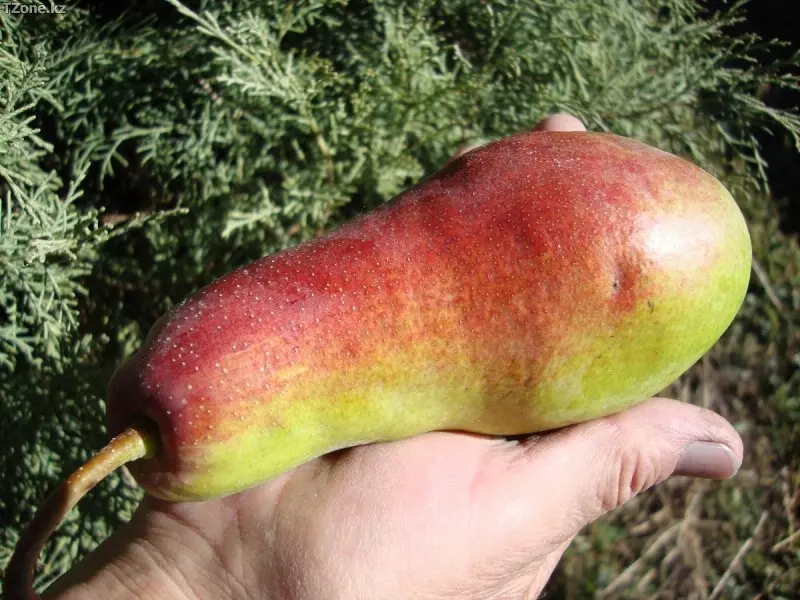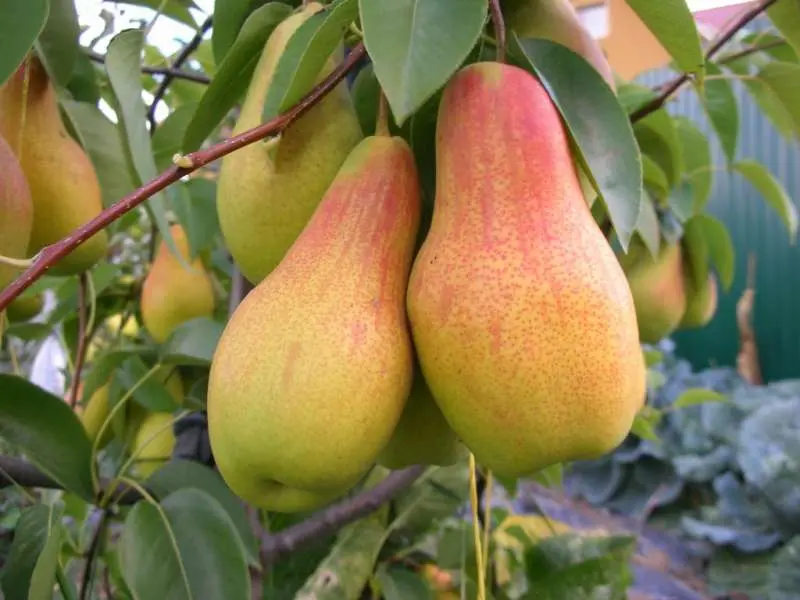Contents
Any self-respecting gardener on the site must have a tree with the most fragrant and delicious fruits – a pear. There are several dozen varieties of them – for any, even the most demanding and selective, taste. And the Talgar beauty pear, bred by Kazakh scientists back in the middle of the last century, is especially popular among dacha professionals and amateurs who spend only minutes free from their main activities in the garden. And this is not surprising, because this variety has the most important advantage in our cold climate – resistance to frost and cold. And the taste qualities, which are revealed both fresh and canned, will not be an extra positive characteristic.
Variety description
Unlike her relatives, the Talgar beauty is not tall. It reaches medium size and has a wide crown, pyramidal shape.

As for the base – the skeletal branches – they are located on the trunk almost at a right angle. The rest of the branches of the Talgar pear are hanging, not very thick, and the bark of the trunk and main branches is gray and peels off with scales.
Fruit
In the same way as in other varieties, the fruits of the Talgar Beauty pear are of a pronounced pear-shaped shape, sometimes beveled at the top, with a not too thick skin. In size, pale yellow with a “blush” on the sunny side, the pears of the Talgar beauty reach no more than 150 grams. In terms of taste, the creamy flesh has a good taste, surprisingly juicy, fine-grained and with a slight aroma. They are stored for a long time, but only if they are plucked until fully ripe and placed in a cold room or cellar. The fruits of such a tree are qualified as table fruits and are suitable both for salads or desserts, and as a fruit snack.

Pollinators
The variety of this fruit tree did not appear independently, but as a result of pollination of the seeds of another variety – the Forest Beauty. Scientists from research institutes in Kazakhstan brought out the Talgar beauty pear. Three trees serve as pollinators for her: Clapp’s Favorite, Goverla and Conference.
In general, individuals of this variety are distinguished by medium flowering periods and a fairly high resistance to cold. The harvest from this pear can be started already at the end of September. It costs a lot to prepare places for fruits in the cellar, as the tree is highly productive. Until the end of winter, all family members and relatives will be provided with vitamins.
Advantages and disadvantages
Like any pet in the garden or in the garden, the Talgar pear has its advantages and disadvantages. In order to minimize the shortcomings, she, like any other fruit, needs care. And, based on the description of the variety and taste characteristics, the result will exceed all expectations.

Advantages of the variety
All fruit trees, first of all, are valued for the taste of the fruit, and after that – for ease of care. One of the main advantages of this variety is high frost resistance. This is especially true for the Moscow region, where the climate is not particularly warm, and summer residents are still planting gardens and orchards. Moreover, this suggests that special care for this culture is not needed.
As you know, all fruit trees, berry bushes, and the garden in general, are subject to various diseases caused by parasites and insect attacks. That is why, another advantage of planting on any part of the Talgar Beauty pear is its resistance to fungal diseases and pests. In particular, the tree has immunity to scab.
It will not be superfluous to note the taste, as well as the possibility of long-term storage of fruits. Despite the fact that the harvest from this tree is harvested by the end of the first month of autumn, they can lie in the refrigerator or in the cellar until the end of winter. And, at the same time, absolutely not to lose taste, but on the contrary – to become even tastier! Moreover, due to the high yield of each tree, it is worth preparing enough storage space. And the external qualities of pears – bright color, flowery skin and beautiful shape, as in the photo, can decorate any salad or fruit vase.

Lack of variety
There are negative qualities in everything and everyone. However, there are exceptions to every rule. In this case, a pear of this variety. It is not surprising, but with all its advantages, this subspecies of disadvantages has practically no. The minus of the Talgar beauty can be called the only one – the fact that the pulp of the pear becomes brown in case of late harvest from the trees. Then the fruit is not stored for a long time, and loses almost all of its taste. Also, many call the crunchy properties of the fruit pulp as a lack of varietal trees – supposedly this property does not make it clear the degree of ripeness of the pear.
Video “Late pear varieties Paten”
Characteristics of pear varieties Glubokskaya, Talgar beauty, Belarusian late









